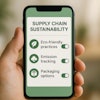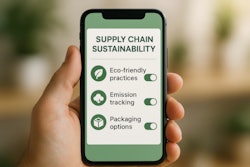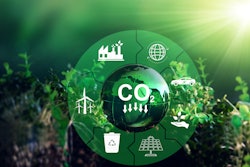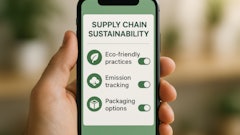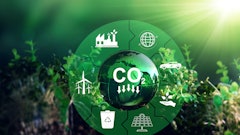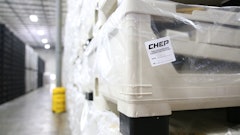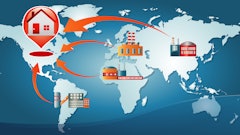
The national conversation is filled with headlines about companies adjusting their ESG initiatives. But in conversations with transportation leaders, it’s a quiet but persistent momentum.
New research from the Harvard Business Review found that while global S&P 100 and Fortune 500 companies may be talking less about sustainability, they’re not backing away. In fact, 32% have accelerated their sustainability goals in 2025, and another 40% are holding steady. Only 13% have deprioritized sustainability altogether.
This trend — often referred to as “greenhushing” — is not a retreat. It’s a recalibration. Where ESG once led headlines, today’s conversation has evolved into one about resilience, efficiency, and cost performance.
And sustainability is still a critical driver of all three.
Sustainability as a tool for cost-savings and operational resilience
As shippers grapple with tariff volatility, shrinking consumer demand, and shifting regulations, sustainability goals are increasingly sidelined by more immediate operational concerns. While this tradeoff may seem inevitable, it’s worth resisting.
Done right, sustainability and operational success aren’t mutually exclusive — they’re mutually reinforcing.
Many of the opportunities on a decarbonization roadmap are either cost-neutral or even cost-saving. Strategies that lower emissions — like reducing empty miles, optimizing mode selection, electrifying yard operations, and using renewable fuels where feasible — also deliver measurable cost and efficiency gains.
But realizing these benefits often hinges on internal alignment. Sustainability can’t be siloed from procurement or operations. It has to be integrated into how organizational decisions are made.
When procurement and operations teams rely on consistent data and cost-emissions analysis to evaluate options, decisions like switching carriers or shifting modes gain cross-functional support and become mutual successes.
There’s evidence that this alignment is becoming more embedded at the executive level. As of 2024, 43% of Fortune 100 board members have ESG credentials, bringing sustainability literacy into the boardroom and driving holistic decision-making at the top. As that influence trickles down, it’s helping sustain emissions-reduction momentum, even as many leaders choose to be less publicly vocal about it.
How to keep sustainability momentum strong in 2026, greenhushing or not
Heading into 2026, collaboration is the name of the game. Sustainability teams can’t do it alone, especially when their work is becoming less visible in the public eye. Quiet progress depends on strong cross-functional alignment, clear data, and smart strategy.
As 2026 planning ramps up, here are four actions every organization should take:
Unite teams with data
Procurement, operations, and sustainability often have competing priorities, but data can be the common ground that breaks down silos. It brings objectivity to decisions and can be used to craft shared strategies with buy-in across business units.For example, procurement might choose a carrier based on cost, while sustainability prefers one with stronger emissions performance. Or operations might need to prioritize speed over a lower-emissions mode like rail. With accurate emissions and cost data, teams can better understand the tradeoffs behind each choice.
This shared visibility also makes it easier for senior leadership to see where sustainability goals are being prioritized — and where they’re not — so decisions can be made in full context.
Most importantly, it helps surface win-win opportunities, like optimizing load fill, a move that reduces both cost and emissions, or switching to cost-competitive SmartWay-certified carriers.
2. Make sustainability everyone’s strategy
Setting sustainability goals in isolation is a quick way to alienate the procurement and operations leaders who will be responsible for executing them.
Instead, embed emissions reduction into the core strategies of these functions. When sustainability becomes part of everyone's KPIs, it shifts from a “nice-to-have” to a core business imperative. This approach drives greater accountability, opening the door to collaboration, shared ownership, and smarter decision-making across teams.
3. Use AI to support data-driven decisions
Should you shift a lane to rail? Switch to a carrier using renewable diesel? Consolidate loads to cut emissions? These decisions are complex, and they rarely affect just one part of the business.
AI helps unpack trade-offs and opportunities in real time. By modeling how different modes, carriers, and energy types impact emissions and cost, it equips cross-functional teams with a shared view of the implications so you can make decisions faster and with greater alignment.
4. Redefine collaboration up and down the supply chain
Sustainability progress depends on the network around you, and that requires more intentional collaboration with carriers, suppliers, and even industry peers.
One place to start: use RFIs and RFPs to signal that emissions reduction matters. Few shippers ask carriers what alternative energies they’re using or willing to adopt, but doing so is the first step toward broader change. As more shippers prioritize these questions, they send a clear market signal that low-emissions solutions are in demand. Over time, that demand drives adoption.
Shippers can also foster collaboration with suppliers in the same geographies, coordinating delivery schedules to cut empty miles and maximize trailer efficiency. These partnerships aren’t always simple, but they unlock emissions reductions no single player can achieve alone — and they often deliver cost savings, too.
Staying the course in a quieter moment
If your team feels stuck in a period of greenhushing, rest assured: you’re not alone — and you’re not off course.
Even now, the myth that sustainability always comes at a price premium is giving way to more informed, data-backed decision-making. Many teams are using this quieter moment to double down on data and build stronger supply chains that are more sustainable.
Sustainability may have slipped from the spotlight, but that doesn’t mean the work stops.
